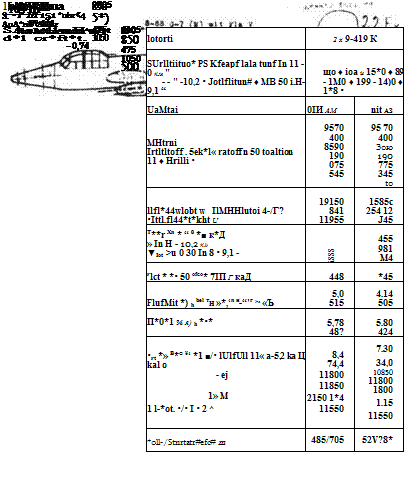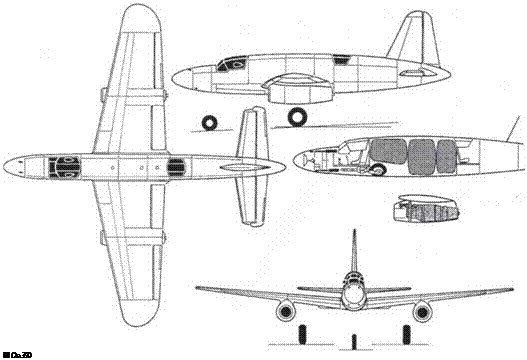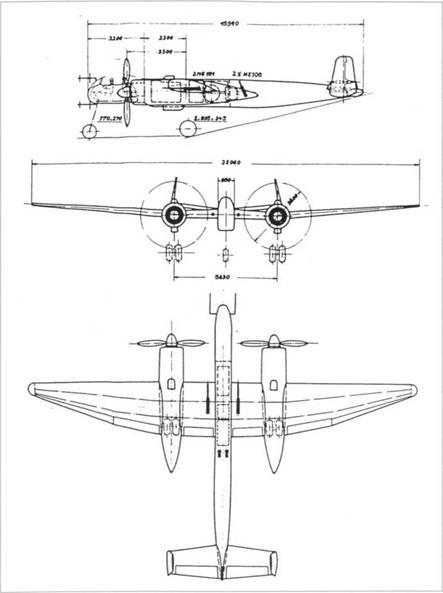Night Fighters in the Jabo Role
An almost forgotten chapter of the air war was the enforced use of multi-seater night fighters as Jabos (fighter-bombers). On account of the lack of operational aircraft for night operations at the end of 1944, the gap was bridged by the plentiful night-fighter arm.
 |
The Ju 88 G-7 ‘Mosquito-hunter’was only built as an experimental machine.
During the Ardennes Offensive of December 1944-January 1945 IV./NJG 3 crews had flown operations along the southern flank of the attack near Metz and Nancy to seal off the battlefield. Night low-level attacks on railway targets were of special interest. In addition to IV./NJG 3, I./NJG 4 and I. and IV./NJG 6 were redeployed, enabling 32 machines to attack Bastogne convoy traffic. Between 17 December 1944 and 1 January 1945 the two NJG 6
|
|
|
Numerous varying versions of the He 219 were planned, but only the A-7 was ever built. The high-altitude night fighter with reduced armament shown here was never more than a project study. |

Gruppen flew ten fighter-bomber operations using SD 1,10,15, 50, 500 and SC 500 release containers. During one attack an American Northrop P-60 Black Widow night fighter was shot down. NJG 6 lost nine crews during the nightly low-level missions.
On the night of 1 January, IV./NJG 3 scored some successes during assaults on railways in the west despite repeated encounters with Black Widows. As these were easy to out-manoeuvre, the highly skilled Ju 88 pilots saw them as inoffensive provided they were spotted in time. The Allied medium AA fire, however, continued to exact its toll of Ju 88 G-6 bombers.
After V./NJG 2 completed night-fighter training in January 1945, night Jabo training commenced. For this purpose Ju 88 G-6 night fighters were made available. The radar aerial installation was removed and the machines fitted with bomb-release gear. Training began on 3 January at Neubiberg. From mid – February flight training was cut back for shortage of fuel. In March 1945 flying was only possible on four days. The Reichsbahn provided two decommissioned locomotives for gunnery practice.
On the night of 9 April, five Ju 88 night fighters left Schleissheim to attack ground targets in the Karlsruhe-Mannheim-Oppenheim-Kirn-Landstuhl area. More than 20 heavy lorries were left in flames. These low-level operations were very dangerous because the convoys were well protected by AA. On 10 April five Bf 110 G-4s attached to 7./NJG 6 searched the Mannheim-Strasbourg – Pirmasens area and set afire numerous heavy lorries, little defence being offered. On 11 April night-fighter crews sought targets in the Eisenach-Ohrdruf-Erfurt area. A number of enemy supply transports driving with headlights were bombed and strafed with machine-gun fire. No aircraft were lost. These attacks were little
Drawing of the mixed-propulsion Do 335 B-6 night fighter. Expensive projects of this kind had no prospect of being realised after 1944.

At the end of 1944 the Do 350 was one of two jet versions being planned as the successor to the planned piston-driven Do 335 night fighter.
more than nuisance raids and no significant interruption of the enemy traffic was to be expected with so few aircraft.
Constant attacks by low-flying Allied aircraft against airfield dispersal areas caused increasing losses of Luftwaffe machines. Although these were well protected by machine guns and light flak, it was risky to be in the open around the airfields. Allied aircraft repeatedly attacked planes parked on the airfield boundaries. On the night of 14 April Thuringia was the main target for the night fighters. Crews of I./NJG 6 for example attacked ground positions in the Augsburg area. On 20 April several night fighters were sent to bomb a small bridge near Rastatt. The result is not recorded. Several attacks were made from Neubiberg against enemy airfields in Alsace. Major Siebel of IV./NJG 6 failed to return from probably the last of these on the night of 30 April. The other crews were made prisoner over the next few days. In view of the losses sustained it is clear that these operations did not inflict any grievous damage on the enemy. The night raids disrupted supply traffic to a minor extent, but this was of such a size in 1945 that it scarcely mattered.
Cannon Fodder











